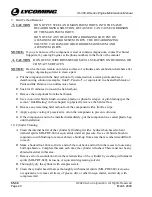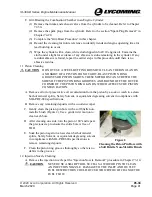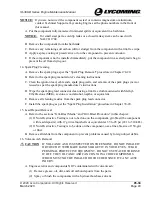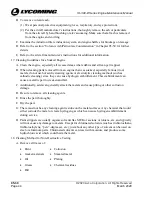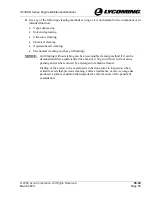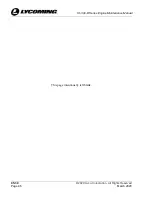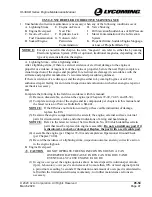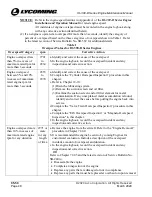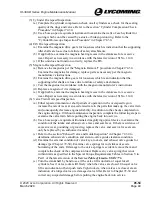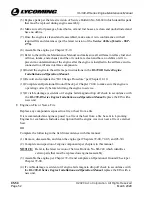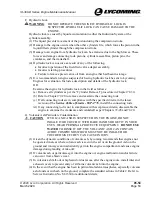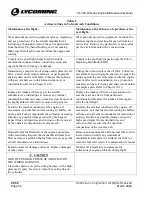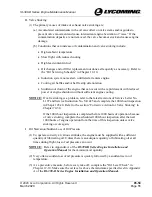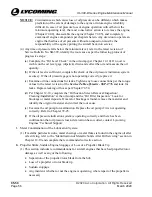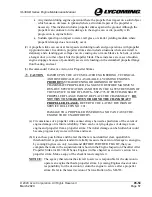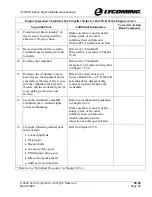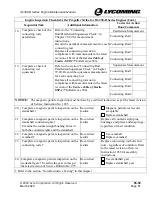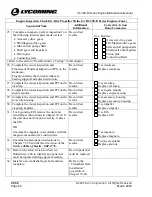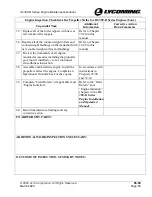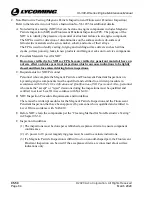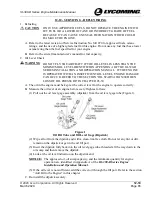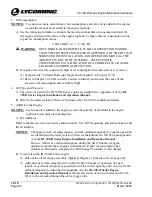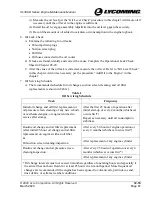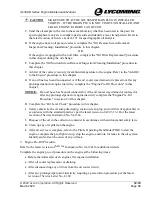
IO-390-D Series Engine Maintenance Manual
05-50
© 2020 Avco Corporation. All Rights Reserved
Page 54
March 2020
IO-390-D Series Engine Maintenance Manual
Table 2
Action to Take in Volcanic Ash Conditions
Maintenance after flight…
Maintenance after 10 hours of operation or the
next flight…
Wear personal protective equipment (gloves, respiratory,
and eye protection). Per the aircraft manufacturer’s
instructions, thoroughly remove the ash or particulate
from the aircraft by hand brushing or air/vacuuming.
Make sure that all ash is removed from the engine and
cowling.
Wear personal protective equipment. Examine the
external engine and cowling for any particulate or
ash residue. Remove any particulate or ash residue
per the aircraft manufacturer’s instructions.
Complete the post-flight inspection. Particularly,
examine the induction filters, induction system, and
engine baffles for blockage or damage.
Complete the pre-flight inspection per the Pilot’s
Operating Handbook (POH).
Immediately, complete an oil change and replace the oil
filter. Collect an oil sample and have a spectrographic
analysis done on the oil sample. Compare this analysis
with past oil analyses to determine engine wear or
contamination. Refer to Chapter 12-10.
Change the oil and replace the oil filter. Collect an
oil sample for spectrographic analysis. Compare the
results against the last oil sample to identify engine
wear or effects of contamination. As a precaution,
complete another oil change and analysis of another
oil sample again. Refer to Chapter 12-10.
Replace the intake air filter, as per the aircraft
manufacturer’s instructions to remove any internal
contamination that can cause premature wear because of
the highly abrasive effects from most solid particles.
Replace the intake air filter as a precaution to be
sure there are no effects from particulate
contamination. Replace the intake air filter again
after the next flight.
Examine the external condition of the engine, all
accessories, external fuel and oil cooling air baffles, oil
hoses, and all other components for corrosion or scoring.
Identify any possible damage caused by high speed
impact from solid particles and corrosive effects caused
by the chemical composition of volcanic ash.
Examine the external condition of the engine, all
accessories, external fuel and oil cooling air baffles,
oil hoses, and all other components for corrosion or
scoring. Identify any possible damage caused by
high speed impact from solid particles and
corrosive effects caused by the chemical
composition of the volcanic ash.
Drain all other fuel/fluids from the engine and replace
with clean fluids. Replace the disposable airframe fuel
filter or remove and clean the fuel inlet screen, as per the
aircraft manufacturer’s instructions.
Remove and examine the airframe fuel filter or fuel
inlet screen to identify any remnants of
contamination. Replace the airframe fuel filter or
clean the fuel inlet screen if contamination is found.
Examine seals for damage and leaks. Replace damaged
or leaky seals.
Monitor oil temperature and pressure for
indications of engine problems during flight.
CAUTION
DO NOT USE HIGH PRESSURE AIR SPRAY ON
THE WIRING HARNESS.
Clean the engine, except the wiring harness, with a high-
pressure air spray. Be sure to clean the cooling fins on
the cylinders.

